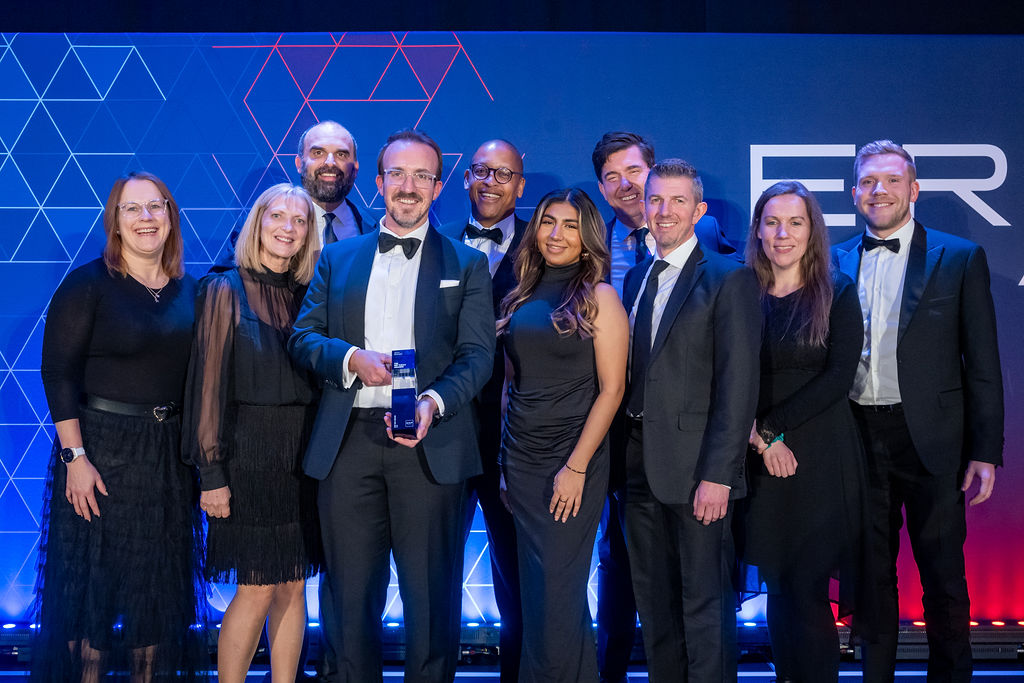Mobile applications have long been everywhere – but for field or off-site workers in physical operations, using connected devices such as smartphones or tablets is a relatively new concept. That’s how the recent emergence of field service management (FSM) – used to help field service engineers, technicians and specialists with the resources they require to do their jobs efficiently – has added an extra layer of structure to field service operations.
This has happened by allowing greater precision and connectedness to the previously manual process in which paperwork was exchanged among field service technicians and multiple phone calls occurred between customers and office personnel. Amongst the key players rising in the field are ERP leader SAP and IoT challenger Samsara, with the former having partnered with Apple on an iOS-based FSM solution, and the latter having introduced new mobile-led features at its recent Samsara Beyond event.
Speaking with SAP and Samsara, a bigger picture emerges of how FSM adds business value beyond simple convenience – and a discussion of whether obstacles exist when it comes to operating systems and adoption by older workers.
“Smart” FSM becoming mainstream
With more automation market leaders now deploying connected devices to make the work of frontline workers safer, easier and better synchronized, FSM is now a growing fixture in ERP software.
Kiren Sekar, chief strategy officer at Samsara, pictured below, explains that with the recent emergence of FSM technologies, including the right connectivity, video, AI and sensor data, tech vendors are striving to make the worker experience more efficient, pleasant and ultimately safer for workers.

Smartphone adoption is likely to galvanize this change. As Sekar tells ERP Today, while the use of phone and tablets in physical operations is relatively new, it is on the verge of becoming mainstream.
“That’s why we’re focused on the worker experience,” he says. “You might be delivering packages, or maintaining water infrastructure or climbing up towers to maintain energy infrastructure. We’re helping workers to use the devices safely and efficiently… when we look five, 10 years down the road, mobile devices used by frontline workers are going to be ubiquitous.”
The acid test is in how devices are utilized. For Sekar, it’s about first digitizing paper-based processes, and then discovering actions which weren’t previously possible with pen and paper.
“We then think about, ‘how do we best train workers out in the field and help them solve problems with their connected devices?’”
When it comes to frontline workers, generational differences could have a potential impact on tech adoption. Some workers may be new to the field, while others are veterans of 25 years and counting. Sekar, though, believes that no matter their age or familiarity with technology, frontline workers all “use mobile apps in their personal life; they know how to get an Uber and track it in real-time. They know what real-time workflows and new technology look like, and they want that in the workplace.”
But when it comes to tech adoption, the physical operations industries for which field service remains integral are traditionally laggards. Asked why he thinks it took so long to deploy mobile forms of FSM tech and FSM technology in general, Sekar shares that despite the age differences amongst workers, there is a common unity in that “they’re all digitally fluent now. They’re saying, ‘Hey, I want more of this’ and we don’t see any kind of resistance,” he explains from the Samsara point of view.
Samsara has also ensured that there is no difference in experience or functionality for its customers when it comes to either using Android or Apple operating systems. But as a reflection of the fact that Android’s market share worldwide is 70 percent, versus Apple’s 30 percent, the company sees many customers choosing to use devices with Android rather than iOS operating systems.
Say hello to “SAPple”

In other words, the iPhone isn’t everything when it comes to FSM in the palm of one’s hand. Bad news for Apple fanatics everywhere, perhaps. That said, B2B giant SAP and consumer tech titan Apple have collaborated from the ground up on an iOS version of SAP Field Service Management, an app which helps with FSM processes. In particular, the application aids frontline workers with sending ETA, arriving on time with the right equipment to solve service requests efficiently and also real-time optimization for better utilization in dynamic service environments.
Detailing some of the ways SAP’s FSM tech makes an impact, Tom Kurtz, VP, global solution lead, asset and service management at SAP, discusses Bosch Rexroth AG, a leading provider of tailor-made system solutions in drive and control tech. The company, he explains, was looking to increase the efficiency of field service calls and maximize technician productivity. It also wanted to digitize its field service management and drive up-selling opportunities at technician touchpoints.
“With the help of SAP Field Service Management Solutions, they were able to efficiently schedule service calls and monitor KPIs across the service network and implement convenient, on the go access for technicians through SAP’s mobile app.
“The integration of SAP Field Service Management with the existing SAP ERP application and SAP Sales Cloud solution enabled communication between the field, dispatchers, service sales representatives and the back office which led to effective, automated and standardized field service planning without manual intervention.”
For the VP, the key to frontline worker adoption is all about good design, arguably Apple’s USP over the years for consumers when compared to Google’s Android platform. This is particularly crucial considering ERP’s notorious track record for training-intensive user interfaces, for which more end-consumer technology may be the fix.
“I believe the key is to strike a balance between usability and functionality, while also addressing the unique needs and requirements of the enterprise environment. The focus should be on designing intuitive and user-friendly interfaces that simplify complex processes and make it easier for users to complete their tasks.
“This can involve leveraging modern design principles, such as responsive design, contextual help and a personalized experience. By doing so, organizations can create more effective ERP systems that support their business processes and enable users to be more productive and efficient.”
Also, as part of the battle with unfavorable conditions that frontline workers often face in challenging locations, the SAP VP explains that the mobile app was created to run in both online and offline mode. This means that technicians can perform all of their work while disconnected and sync the app data upon returning to Wi-Fi or cellular service.
Kurtz also points out SAP’s FSM offerings are available as native Android and Windows applications. But it seems Apple has the edge here for SAP’s FSM expansions; Kurtz explains that the partners are now in a continuous stage of developing the apps further, increasing the feature set and incorporating customer feedback.
“We continue to work closely with Apple to ensure the best experience across SAP products and Apple devices… iOS integration is integral to the SAP BTP platform. We are working closely with Apple to ensure BTP provides all necessary building blocks to build native, high-performance and secure mobile apps for SAP users. We continue to update BTP to support the latest innovations in iOS and enable Apple devices to fully enhance SAP-managed business processes.”
To provide a “seamless” user experience across SAP and Apple, the companies have jointly developed Fiori for iOS, a “unique design language that delivers the best experience for SAP users on Apple devices”.
“We innovate together with Apple to bring new products to market and to make sure that we take the advantage of the unique features of iOS to deliver the best possible experience. As some of our products mature and based on market demand, we also release versions of these apps on additional platforms later in their lifecycle. We continue to work closely with Apple to ensure an optimum customer and user experience on all the apps we have on iOS.”
Looking ahead to the future of this partnership, Kurtz says that the two tech leaders “will continue to jointly explore use cases where we leverage the innovation of Apple devices to improve the experience of SAP users, enhance the context of business processes and help our joint customers reach their sustainability goals”.
Smartly sustainable
Sustainability may be the most crucial caveat in the expansion of mobile FSM tech. As ESG becomes a bigger boardroom talking point, so too does the focus on ensuring operations have as low a carbon footprint as possible. While admitting that the world of physical operations that FSM serves is responsible for over 50 percent of global CO2 emissions, Samsara’s Sekar sees collaborative efforts as an important challenge and an opportunity to make a significant impact.
“By capturing data about their fuel and energies, about their operations, we can turn this into a data problem and apply software so customers will actually use the data in our platform to run sustainable driving incentive programs where they coach drivers on how to operate their vehicles and equipment efficiently. And then they provide rewards to the most efficient, sustainable drivers.”
And with smartphones on the road providing vast amounts of data in real time while tracking driver mileage, it’s easy to see where “smart” FSM can make an impact. It also seems some Samsara customers are already putting this benefit of FSM into action.
“One of our logistics customers in the US Midwest through this program not only reduced their CO2 emissions, they lowered their costs by a million dollars a year,” Sekar reveals. “So that’s the kind of impact where they’re helping their sustainability goals and driving down costs at the same time.”
Doubly smart, one might say.
Additional reporting by Stephanie Ball and Yoana Cholteeva.




